6 Spot-on Places to Use Penny Tiles
http://decor-ideas.org 04/14/2014 19:23 Decor Ideas
Looking for a tile with fun-loving appeal? Penny tiles, also known as penny rounds, brings both heritage and cheer to a home. A throwback to the early 1900s, penny tiles have come full circle to harmonize with nearly every style, from Victorian to bungalow, midcentury modern to contemporary.
Penny tiles were originally used for flooring, but also are a great choice for backsplashes, wall tile and and even columns. ANd given all the color and pattern possibilities, the love for penny tile may be never-ending.
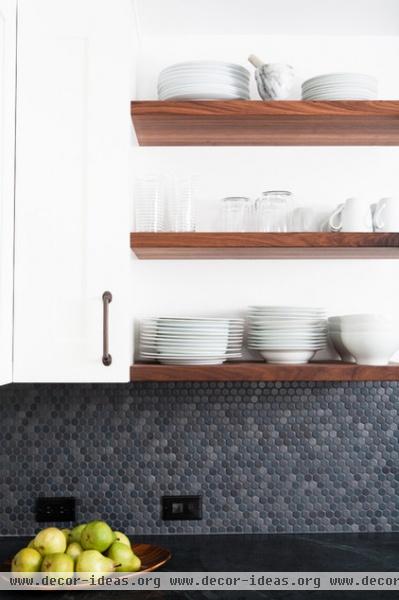
Penny tiles are round in shape and usually between ¾ inch and 1 inch in diameter. Making their appearance in the early 1900s, they were typically made of unglazed white porcelain. At the time white was perceived as more sanitary and believed to not “hold sickness,” says Caitlin Walker of Mercury Mosaics. Colored floor tiles later became popular, as well as patterns, such as borders and flower designs.
Today penny tiles have hit the design jackpot — likely because they look great in nearly any space, new or old.
Here’s how to use them right.
Backsplashes
Kitchen and bathroom backsplashes are two of the most common applications. The benefit is that a backsplash isn’t such a huge commitment in terms of area. Penny tiles can create a subdued, textural installation, like this Waterworks penny tile backsplash in a 1950s-style home.
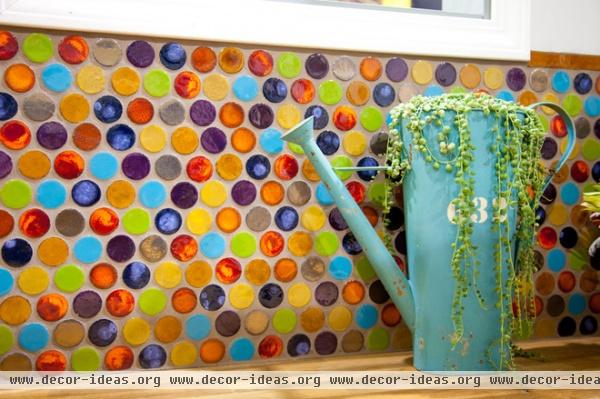
Or for a bold punch, consider it in confetti colors. This penny tile by Mercury Mosaics was hand made in a custom palette.
Most penny tile is machine made and is 5 millimeters (0.198 inch) thick. However, Mercury Mosaics makes all its tile by hand, creating a beefier tile that’s 6 millimeters (0.25 inch) thick. The artisans there start with a big 25-pound block of raw clay, extrude it, hand punch it with cookie cutters and let it dry.
Hand glazing each piece is the next step. After firing, they place each round on a mesh backing by hand. Walker says they’ve become good at spotting small nuances in the spacing between the tile. While they can’t guarantee every space is exactly the same, “we come pretty darn close,” she says. That’s the beauty of things made by hand.
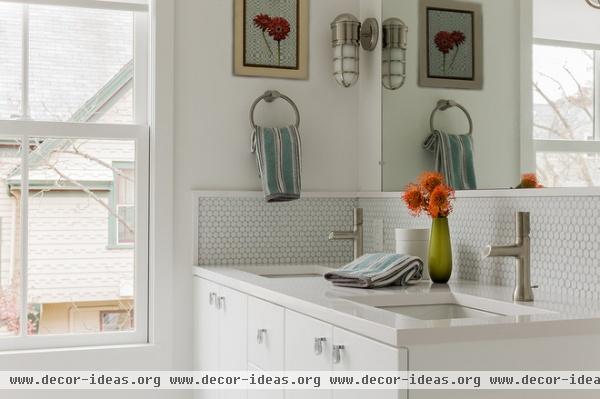
Penny tile pricing varies quite a bit, depending on whether the tile is machine made or handmade. Machine-made tile generally runs between $6 and $30 per sheet, which is close to a square foot. Machine-made penny tile is available in numerous beautiful colors, both solid and two-toned (which means a contrasting color peeks through at the edge of the tile).
Handmade tile costs more because of its bespoke nature. Penny tile by Mercury Mosaics costs $136 per square foot, but it is made specifically for you, mounted in your preferred color arrangement and in your chosen layout, such as staggered or stack laid.
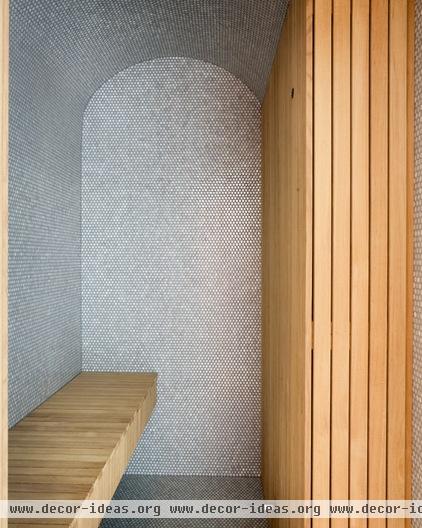
Wall Tile
Penny tile is one of the few tile styles that can be used both on the floor and the wall. Most wall tile isn’t rated for floor use, and the sizes are often inconsistent.
Tiling an entire wall in penny tile creates a uniform, textured appearance without being too busy or spotty. The degree of softness or contrast also depends on the grout color selected. A high-contrast grout (such as black with a white tile and vice versa) will be more graphic than a grout color that matches the background of the tile, as in this contemporary bathroom.
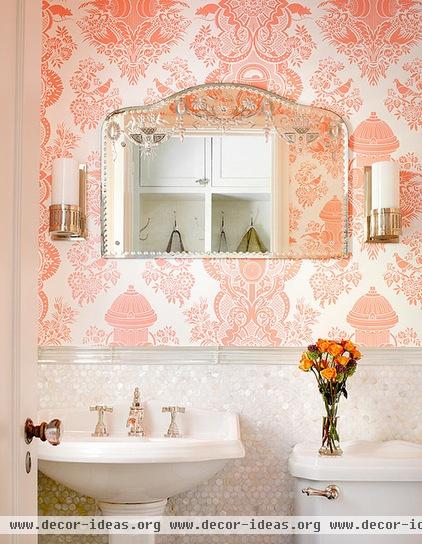
These seashell or mother-of-pearl penny tiles installed on the lower half of the wall add a delicate femininity to this traditional bathroom.
One consideration when installing penny tiles on walls is whether the manufacturer makes a coordinating trim tile. If the tile isn’t installed on the entire wall (corner to corner), the clay edges of the penny tile will show unless a bullnose trim piece or finished pencil liner is installed. A bullnose has a glazed curved, finished edge; a common size is 2 inches by 6 inches. A pencil liner is much thinner, like a pencil. However, not all manufacturers finish the edges of pencil liners, and some manufacturers don’t make trim pieces at all, so be sure to check. This bathroom has a gorgeous translucent chair rail where the penny tile terminates.
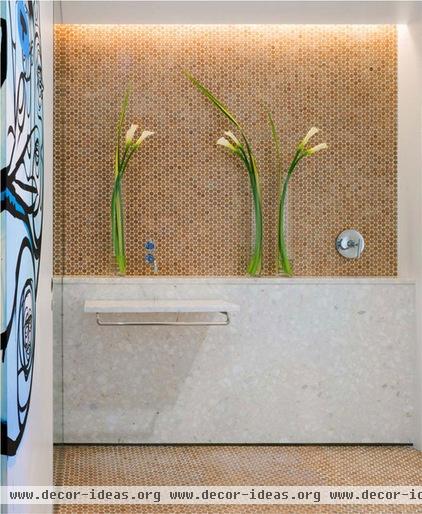
Penny tile is also made from rounds of cork, as shown on this shower wall. Cork is inherently resistant to mold and bacterial growth.
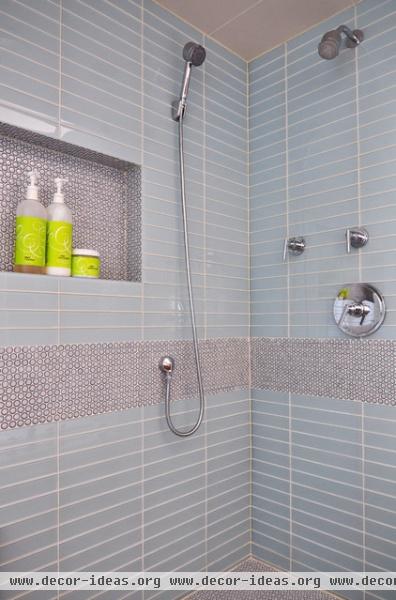
Accents
Accents such as borders can be easily installed by cutting the sheet to the desired width. This shower wall shows off a penny tile by Ann Sacks that has a glaze on the edge that is darker than the rest of the tile, resulting in a more graphic appearance. The designer continued the use of the tile inside the niche and on the shower floor.
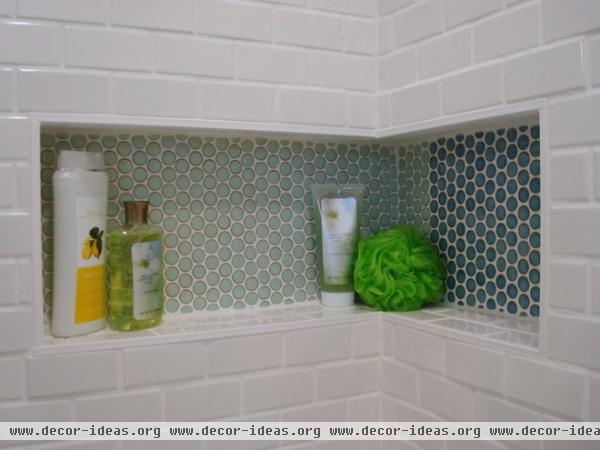
No need to always be conventional. Let penny tile show creativity and a bit of humor. In this installation an inch or two of green penny tile was wrapped around a niche corner before it changes to blue tile.
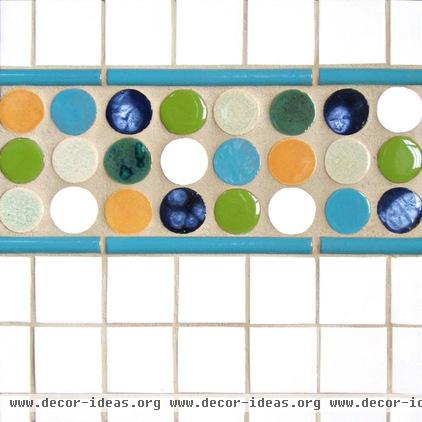
Lily Pad Penny Round Tile Accents allow you to be bold! Mercury Mosaics’ joyful Lily Pad blend is set off by Aqua Fresca decorative trim here.
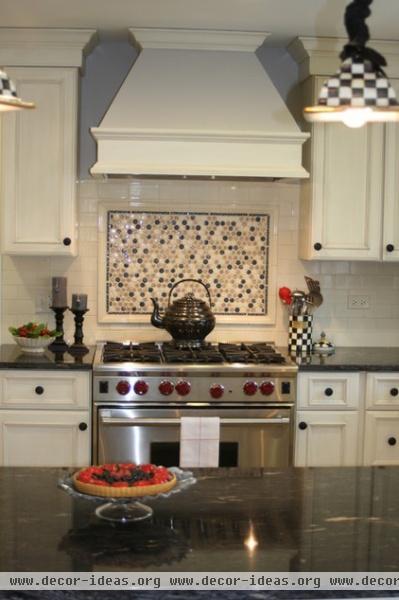
If a penny tile backsplash is overwhelming for you, consider a feature above the stovetop, surrounded by a neutral tile. In this traditional Chicago kitchen, penny tile by Sonoma Tilemakers is set off by Pratt and Larson’s subway tile.
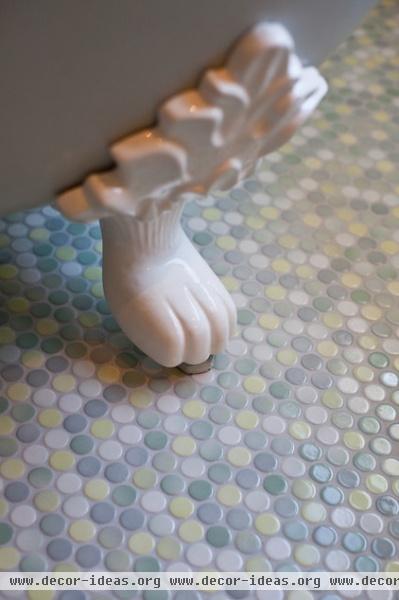
Flooring
In the early days, penny tiles were popular in both commercial and residential installations, especially as nonslip bathroom flooring.
This installation looks fresh and inviting with penny tiles by Waterworks in grays, whites and yellows. The light gray grout grounds the neutral hues and allows the whites and yellows to pop.
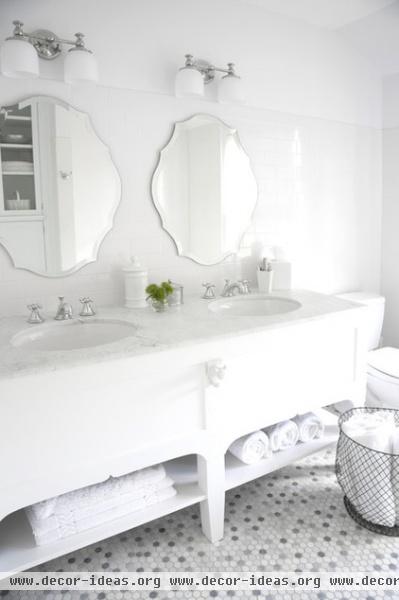
White and gray penny tiles installed in a random pattern lend a playful tone to this airy bathroom.
Penny tiles typically require sanded grout, as the grout joint width created on the mesh backing is ⅛ inch or greater. However, it’s a good idea to check with the tile manufacturer.
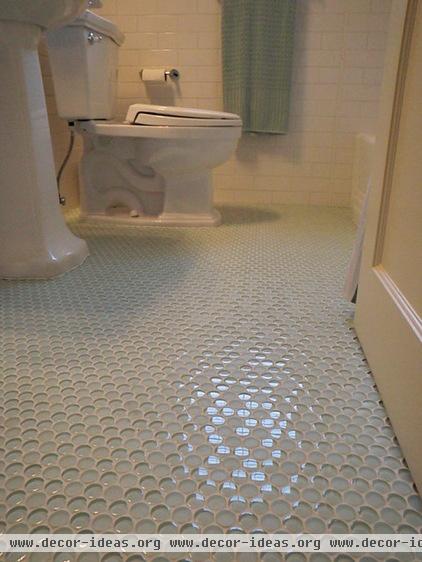
Glass penny tiles add a sense of depth, as the light reflects off the tile and creates shadows, as shown in this revamped 1940s bathroom floor. Because glass is transparent, a white thinset must be used, as well as unsanded grout. Otherwise the sand in the sanded grout will scratch the surface of the glass.
Penny tile should be cleaned with water and a mild soap. Glass penny tile can be cleaned in the same manner or with a pH-neutral glass cleaner.
With any tile, but especially small mosaics like penny tile, it is recommended to seal the grout after installation to prevent staining. The high percentage of grout versus tile and the geometric nature of the pattern will make any stains appear pronounced.
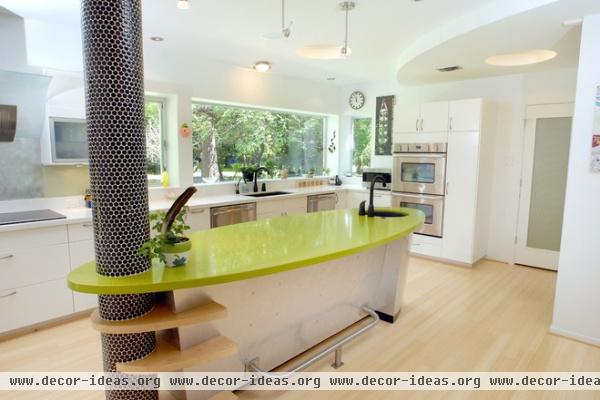
Columns
Columns don’t typically come to mind when one thinks of tile, but penny tile wraps nicely around curved surfaces. The only caveat is whether the seam will match up at the start/end point, and that is a function of the column circumference and the size of the tile and joint on the mesh backing, which all have to be calculated. This column is the star of the kitchen in this Texas industrial- and deco-style home.
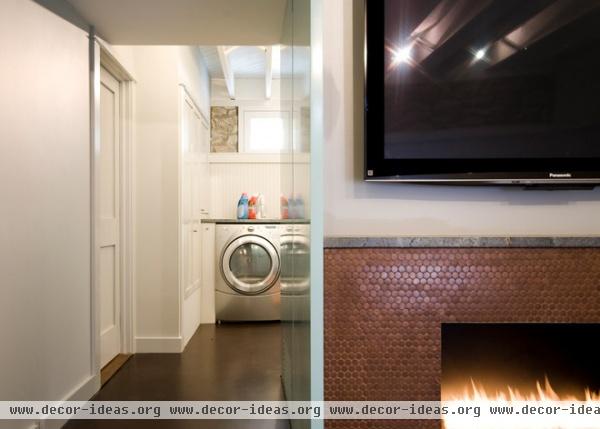
Fireplaces
If columns aren’t a likely recipient for penny tile, neither are fireplaces, but just check out the results. The copper metallic penny tile on this fireplace face radiates a pleasant glow in this contemporary basement in Washington, D.C.
More: Your Floor: How to Shop for Tile
Related Articles Recommended












